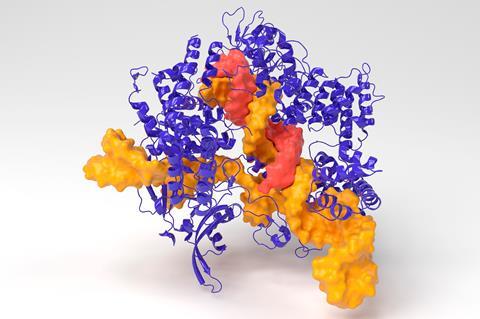
CRISPR–Cas Source: © Science Photo Library
(Medical Science)
Let's delve into CRISPR, an acronym for Clustered Regularly Interspaced Short Palindromic Repeats, a natural bacterial defense mechanism against viruses. Here, "palindromic" refers to sequences that read the same forward and backward, like the word MADAM.
CRISPR–Cas*, for instance, constitutes an ancient bacterial immune system capable of detecting and cleaving viral DNA (as depicted in the above 3D image), a gene-editing process that offers hope for correcting disease-causing mutations in genetic disorders.
Yet, a main hurdle in gene editing lies in identifying suitable target sites within the genome. Conventional methods rely on manual selection, prone to time constraints and errors.
Today, leveraging AI, researchers can swiftly analyze vast genomic datasets, predicting optimal target sites with unparalleled precision.
While AI may lack in imagination, it excels in imaging, proving indispensable in medical science.
Author: renqiulan
* Technically, it is a dual RNA guided DNA endonuclease enzyme associated with the CRISPR adaptive immune system in Streptococcus pyogenes.
|
